Karate Framework
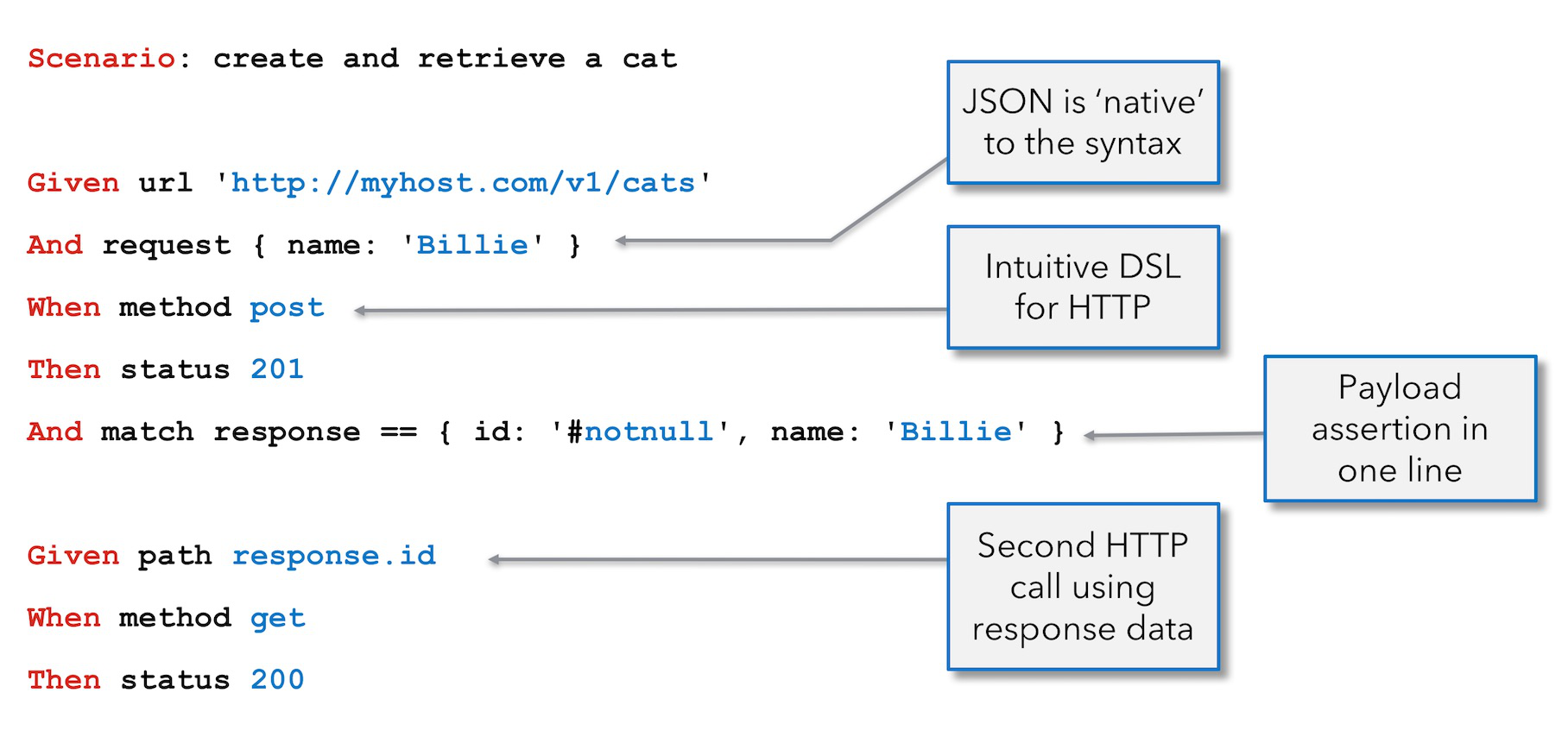
Test Automation Made Simple.
Karate is the only open-source tool to combine API test-automation, mocks, performance-testing
and even UI automation into a single, unified framework.
The BDD syntax popularized by Cucumber is language-neutral,
and easy for even non-programmers.
Assertions and HTML reports are built-in, and you can run tests in parallel for speed.
-
Karate framework is an open source capable of BDD-based Test Automation.
There are each feature that defines the action from the user’s point of view
You can check the desired result by calling the feature as independent or continuously.
Example
## independent
- The user registers as a member.
## continuous
- The user registers as a member.
-> Write a post after successful membership registration.
-> Delete the post after writing.
-> After deleting the post, cancel the membership.
-> When trying to find an ID with the same ID, it is not exposed.
Setup for Karate
-
In order to use Karate Framework, several additions are required to build.gradle.
The configuration is slightly different depending on the Spring or Junit version.
At the time of writing, it was updated based on Junit5.
build.gradle
ext {
karateVersion = '1.0.0'
}
dependencies {
testCompile "com.intuit.karate:karate-junit5:${karateVersion}"
}
test {
// pull karate options into the runtime
systemProperty "karate.options", System.properties.getProperty("karate.options")
// pull karate env into the runtime
systemProperty "karate.env", System.properties.getProperty("karate.env")
// ensure tests are always run
outputs.upToDateWhen { false }
}
sourceSets {
test {
resources {
srcDir file('src/test/java')
exclude '**/*.java'
}
}
}
- You can easily use Karate Framework by adding the above settings.
Source Code
-
Let’s write a test using the Karate Framework.
For reference, Karate Framework creates a file in *.feature format.
Common
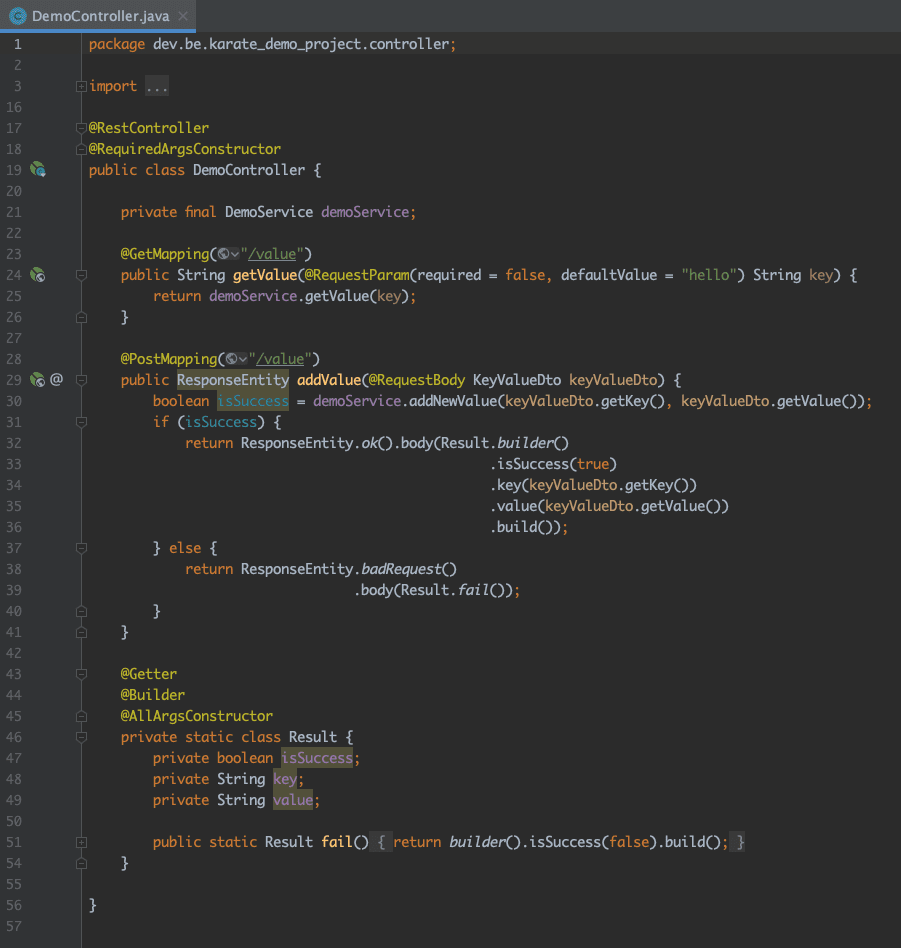
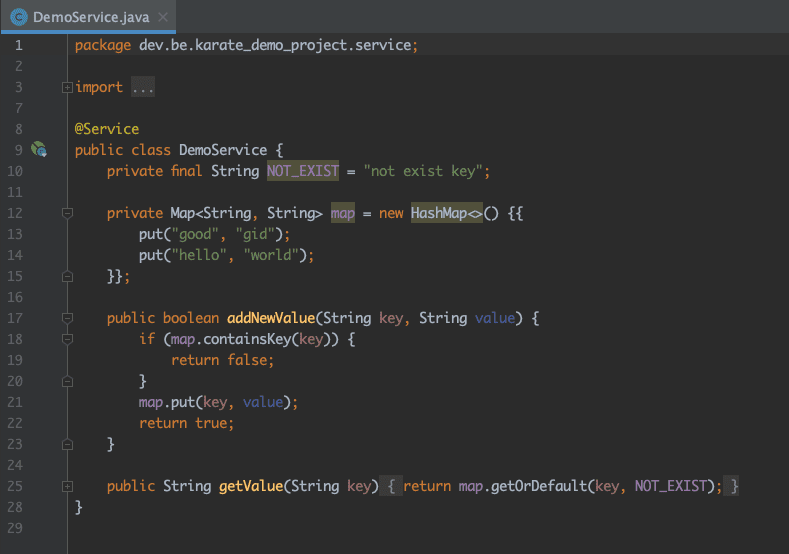
get.feature

-
#5: Refers to the baseUrl value defined in karate-config.
#28: Specifies the API to be requested by the combination of baseUrl + uri.
karate-config.js
function fn() {
var config = {
baseUrl : 'http://localhost:8080'
};
return config;
}
-
#10, #15: There must be a structure expected as a response of the API
The specific value here varies from request to request,
so check the response value using Fuzzy Matching provided by Karate.
-
#24: You can execute the scenario defined in @GetValue alone in the current file (=get.feature),
It can also be executed by using @GetValue Tag in an external feature.
-
In the latter case, the parameter value must be changed dynamically.
If the param variable is undefined
Use a predefined value (=definedParam)
If not, the param received from the outside was used.
def param = typeof param ==’undefined’? definedParam: param
-
The reason for doing the above is to make the test successful
even if it is executed independently or continuously.
if (only use definedParam)
It is not possible to use a parameter passed from an external feature.
else if (only use parameters to be passed from external feature)
When running the test independently, the test fails because there is no param.
-
#29: Specifies the parameter of the API.
< key > = < value > structure.
-
#34 : $ == response
post.feature
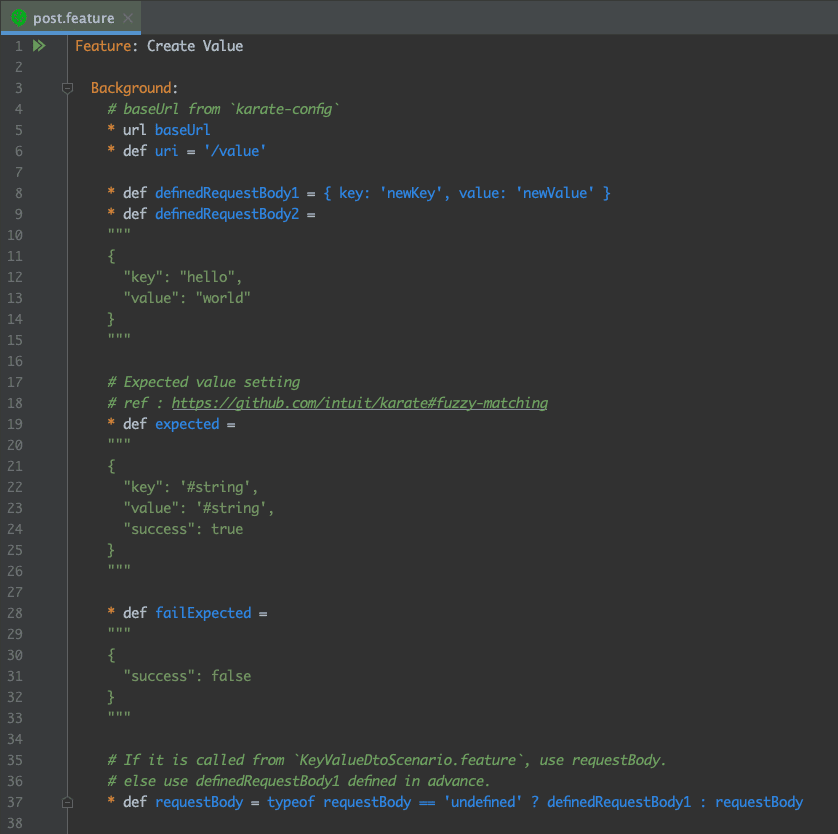
-
#8, #9: Two ways of declaring data in JSON structure
-
#19: Expression using Fuzzy Matching and a fixed value

-
#45: Expect success, so declare 200
-
#67: Expect failure, so declare 400
-
#69, #70: match contains was used.
The important point here is ’==’ != contains.
== must match exactly
but contains only needs to include the variable declared on the right.
-
Therefore
the response is a structure that includes failExpected
so contains should be used.
Usage
-
Once the desired scenario has been defined
execute periodically using a tool such as Jenkins.
It is necessary to check whether the development of a new feature has a side effect on the existing spec.
The required function at this time is the Command Line command.
-
In this article, I summarized the command line as Based on the project.
Run only specify scenario
Command
./gradlew test --tests DemoRunner -Dkarate.options=classpath:karate/demo/get.feature
./gradlew test --tests DemoRunner -Dkarate.options=classpath:karate/demo/post.feature
./gradlew test --tests DemoRunner -Dkarate.options="--tags ~@CreateValue classpath:karate/demo/post.feature"
-
I defined 2 methods in DemoRunner.java
I just wrote it because I wanted to tell you that there are two ways to do it.
In reality, let’s leave only one and delete the rest according to your style.
class DemoRunner {
@Karate.Test
Karate testAutoAll() {
// It executes features that exist `only` in the package area.
// ex) karate/deom/*.feature
return Karate.run().relativeTo(getClass());
}
@Test
void testManuallyAll() {
// Explicitly informs the package of features to be executed.
Results results = Runner.path("classpath:karate/demo")
.tags("~@CreateValue")
.parallel(5);
assertEquals(0, results.getFailCount(), results.getErrorMessages());
}
}
@RegressionTest & Parallel
Command
./gradlew test --tests KarateTests
-
The above command executes KarateTests.java.
Then all the methods in that file are called.
-
Currently, only testScenarioAll( ) exists, so only this method is called.
@Test
void testScenarioAll() {
Results results = Runner.path("classpath:karate/scenario") // [1]
.tags("@RegressionTest") // [2]
.parallel(5); // [3]
assertEquals(0, results.getFailCount(), results.getErrorMessages()); // [4]
}
-
[1] : Search the classpath package defined in Runner.path( ).
-
[2] : Only scenarios that satisfy the conditions specified in tags( ) are executed.
Note: Frequently used expressions for tags( )
"~" = tags("~@ignore")
"OR" = tags("@customer, @smoke")
"AND" = tags("@customer","@smoke")
-
[3] : If there are many scenarios to be executed, you can set the parallel( ) value to shorten the time.
-
[4] : Use the results value to verify the expected result value.
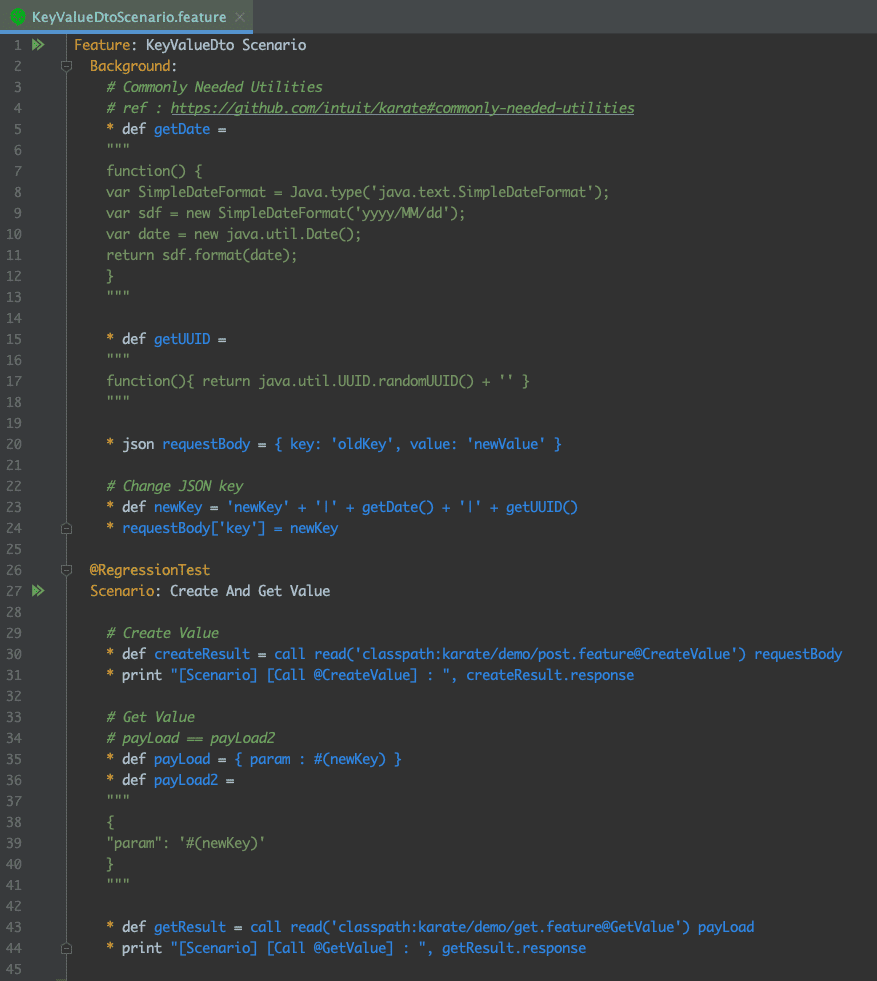
-
If you actually run testScenarioAll( )
Only the scenario that declared @RegressionTest is executed (= #27)
Scenarios with other tags internally are not executed.
-
So to tell you how i actually used it
@RegressionTest was declared and executed only in the scenario containing a series of flows.
In other words, it was confirmed through the test results whether the development of a new feature has a side effect on the existing feature.
After deploying a new feature in the dev environment
When you run Karate Scenario
In the code environment with new features
Existing feature tests can be performed.
Summary
-
Learned the concept and usage of the Karate Framework.
-
As it’s a framework that I’m new to seeing, there must be a Learing Curve
I also had awkward and difficult memories at first
I hope it helps someone a little
I’ve put together the text and put detailed comments on the code as well.
-
If there is a need for Integration Test
Let’s apply Karate Framework by referring to the article and Project Code!